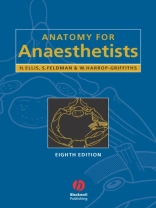This book has been written to help candidates sitting their
professional examination in anaesthesia in order that they may have
at their disposal the detailed anatomical knowledge necessary for
the day to day practice of anaesthesia. Unlike a textbook of
anatomy, which must cover all parts of the body with equally
exhaustive thoroughness, this book concentrates particularly on
areas of special relevance to anaesthesia and points out features
of practical importance to anaesthetic technique. The text is
divided into nine sections; the respiratory pathway, the heart, the
vertebral canal, the peripheral nerves; The Autonomic Nervous
System; The Cranial Nerves; The Orbit and its contents; The Anatomy
of Pain and Zones of Anaesthetic Interest.
The eighth edition has fully expanded and updated text; and
includes new and improved illustrations.
Tabella dei contenuti
Part 1: The Respiratory Pathway.
The Mouth.
The Nose.
The Pharynx.
The Larynx.
The Trachea.
The Main Bronchi.
The Pleura.
The Lungs.
Part 2: The Heart:.
The Pericardium.
The Heart.
Developmental Anatomy.
Part 3: The Vertebral Canal and Its Contents.
The Vertebrae and Sacrum.
The Spinal Meninges.
The Spinal Cord.
Part 4: The Peripheral Nerves.
The Spinal Nerves.
The Cervical Plexus.
The Brachial Plexus.
The Thoracic Nerves.
The Lumbar Plexus.
The Sacral and Coccygeal Plexuses.
Part 5: The Autonomic Nervous System.
Introduction.
The Sympathetic System.
The Parasympathetic System.
Part 6: The Cranial Nerves:.
Introduction.
The Olfactory Nerve.
The Optic Nerve.
The Oculomotor Nerve.
The Trochlear Nerve.
The Trigeminal Nerve.
The Abducent Nerve.
The Facial Nerve.
The Auditory Nerve.
The Glossopharyngeal Nerve.
The Vagus Nerve.
The Accessory Nerve.
The Hypoglossal Nerve.
Part 7: The Anatomy of Pain: Introduction.
Classification of Pain.
Peripheral Receptors and Afferent Fibres.
The Spinal Cord and Central Projections.
Modulation of Pain.
The Gate Control Theory of Pain.
The Sympathetic Nervous System and Pain.
Part 8: Zones of Anaesthetic Interest.
The Thoracic Inlet.
The Diaphragm.
The Intercostal Spaces.
The Abdominal Wall.
The Antecubital Fossa.
The Great Veins of the Neck.
The Orbit and its contents.
The Bony orbit.
The Orbital Foramina.
The Subdivisions of the Orbit.
The Eyeball.
Contents of the eyeball.
The Orbital muscles.
The Fascial sheath of the eye.
The eyelids and conjunctiva.
The Lacrimal apparatus.
Local Anaesthesia for eye surgery.
Index
Circa l’autore
Harold Ellis, CBE, MA, DM, MCh, FRCS, FRCP, FRCOG FACS, is a Clinical Anatomist, at Guy’s, Kings’ and St. Thomas School of Biomedical Sciences. He is an Emeritus Professor of Surgery, Charing Cross and Westminster Medical School, London, UK.
Stanley Feldman, BSc, MB, FRCA, was an Emeritus Magill Professor of Anaesthesia, Chelsea and Westminster Hospital, London, UK. He created and edited the book Scientific Foundations of Anaesthesia.
William Harrop-Griffiths, Imperial College Healthcare NHS Trust, London, UK.












